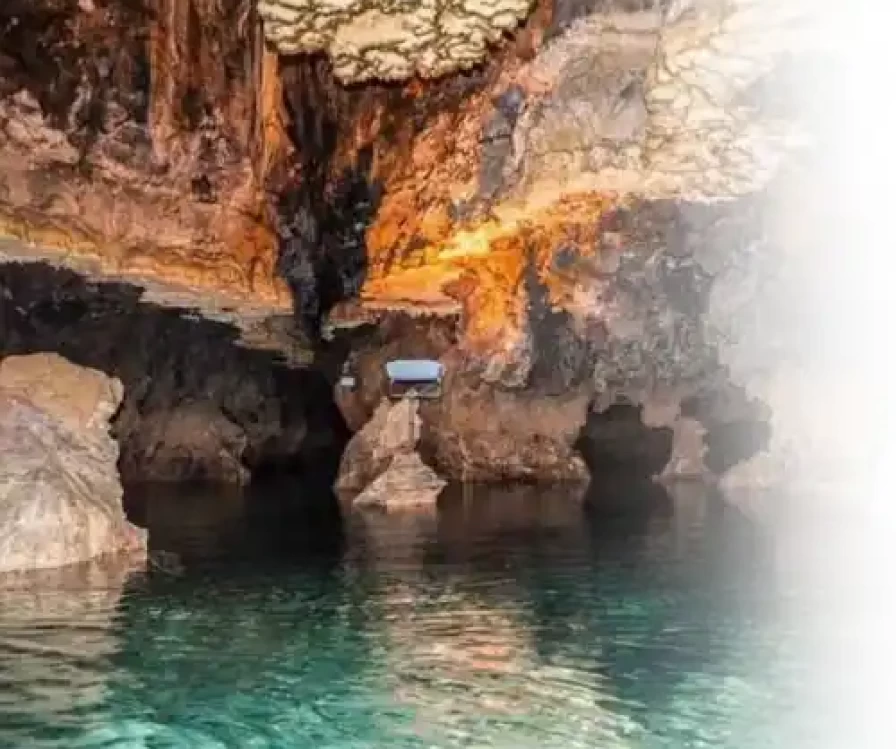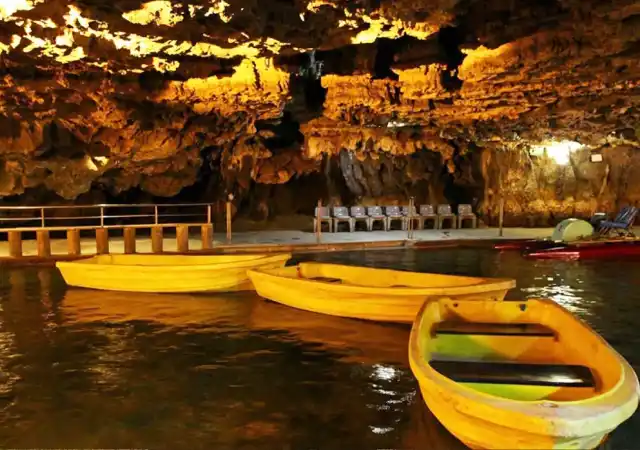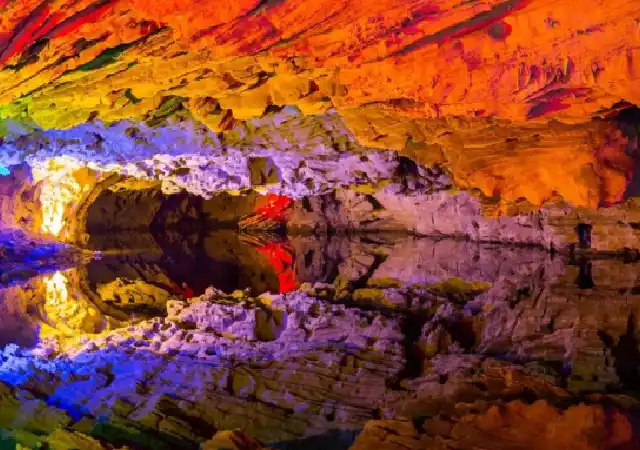
AliSadr Cave





Ali Sadr Cave
Iran is known as one of the world’s most historic and culturally rich countries, and when it comes to natural attractions, its caves hold a special place. Among them, Ali Sadr Cave in Hamedan shines like a true gem, not only in Iran but also on the global stage. Ali Sadr is one of Iran’s few water caves and is considered among the rare navigable water caves in the world. It is also one of the longest water caves discovered so far. The cave stretches for about 11 kilometers, though only around 3 kilometers are currently accessible due to the difficulty of the passages. Because of the underground lakes and streams formed inside, access is possible only by boats and small vessels. Located in the Sari Ghiyeh heights near the village of Ali Sadr in Kabudarahang County, Hamedan Province, the cave attracts thousands of domestic and international visitors every year. It lies at an altitude of around 2,100 meters above sea level and consists of a labyrinth of winding corridors and chambers. Recognized as one of the most important caves in Iran and worldwide, Ali Sadr Cave was officially registered as the 23rd National Natural Heritage Site of Iran on January 4, 2009, by the Cultural Heritage and Tourism Organization.
Geological studies date the cave back to the Jurassic period of the Mesozoic era, roughly 126 to 196 million years ago. For centuries, the local villagers were familiar with the cave, using it as a natural water reservoir for drinking and irrigation. They channeled water from the nearby Sarab spring into the cave, turning it into a massive cistern. This caused the water level near the eastern entrance to rise, blocking further exploration.
However, after the devastating Farsinj earthquake in 1957, cracks formed in the cave floor, cutting off the spring water flow. Within six years, the water level dropped to its natural state, allowing access for the first time. In 1963, mountaineers and cavers from Hamedan entered and explored the cave, documenting its vast chambers and breathtaking formations.
For years, the entrance remained very narrow—only about 50 centimeters wide—accessible only to professional climbers. Finally, in 1974, thanks to the efforts of Abdollah Hajilou, head of the Hamedan Mountaineering Association, and with support from the local community, the entrance was expanded to 5 meters wide and 3 meters high, opening the cave to wider exploration and tourism. By 1976, concrete pathways were built inside, and electric lighting was installed. That same year, Ali Sadr Cave officially opened to the public as a major tourist attraction. Even the Shah of Iran visited the site and ordered the installation of a dedicated power line and the construction of a guesthouse for visitors. Roads leading to the cave were also paved during this time.
The main entrance of Ali Sadr Cave lies in Ali Sadr village, Kabudarahang County, about 70 kilometers northwest of Hamedan in the Zagros mountain range. It sits at an elevation of 1,980 meters above sea level. The region has a harsh mountain climate, with an average annual rainfall of around 300 millimeters. Geologically, the cave is part of formations dating back to the Jurassic period, consisting mostly of limestone shaped by volcanic activity, pressure, and heat. The cave itself is part of a large anticline, with layers tilted at about 40–45 degrees. The Ali Sadr range stretches for about two kilometers, with its highest point reaching 2,180 meters. The limestone ridge extends further south, connecting to the Chalekan and Saraqiyeh mountains.
Historically, locals referred to the cave as “Ali Sard” (meaning “Cold Ali”), a reference to the cold water within. Over time, official documents used variations of “Ali Sard” or “Ali Sad.” When a road was constructed to the village in 1971, the contractor erected a sign reading “Ali Sadr Cave”. The name stuck, and since then both the cave and the village have been popularly known as Ali Sadr.
What makes Ali Sadr truly unique is the ease of navigating its vast underground lakes and waterways. Unlike many other water caves around the world, its canals are large enough to allow ordinary boats to pass comfortably, giving visitors a chance to sail through chambers filled with stalactites and stalagmites. The cave’s water depth reaches up to 14 meters in some places, and the ceiling height in its massive halls is often astonishingly high, creating a surreal, dreamlike landscape.
Today, Ali Sadr Cave is a major international tourist attraction, often described as a natural wonder beyond imagination. Over the years, extensive facilities have been developed around the site: hotels, campsites, restrooms, restaurants, local handicraft shops, and recreational areas to accommodate thousands of visitors each year. Because winters in Hamedan are very cold and snowy, the best time to visit is from spring to early autumn. Inside the cave, the natural rock formations—stalactites and stalagmites of incredible shapes and sizes—never fail to captivate every visitor. Ali Sadr remains one of the crown jewels of Iran’s natural heritage, inviting explorers, tourists, and researchers alike to witness its timeless beauty.
Contact Us
+989054577261